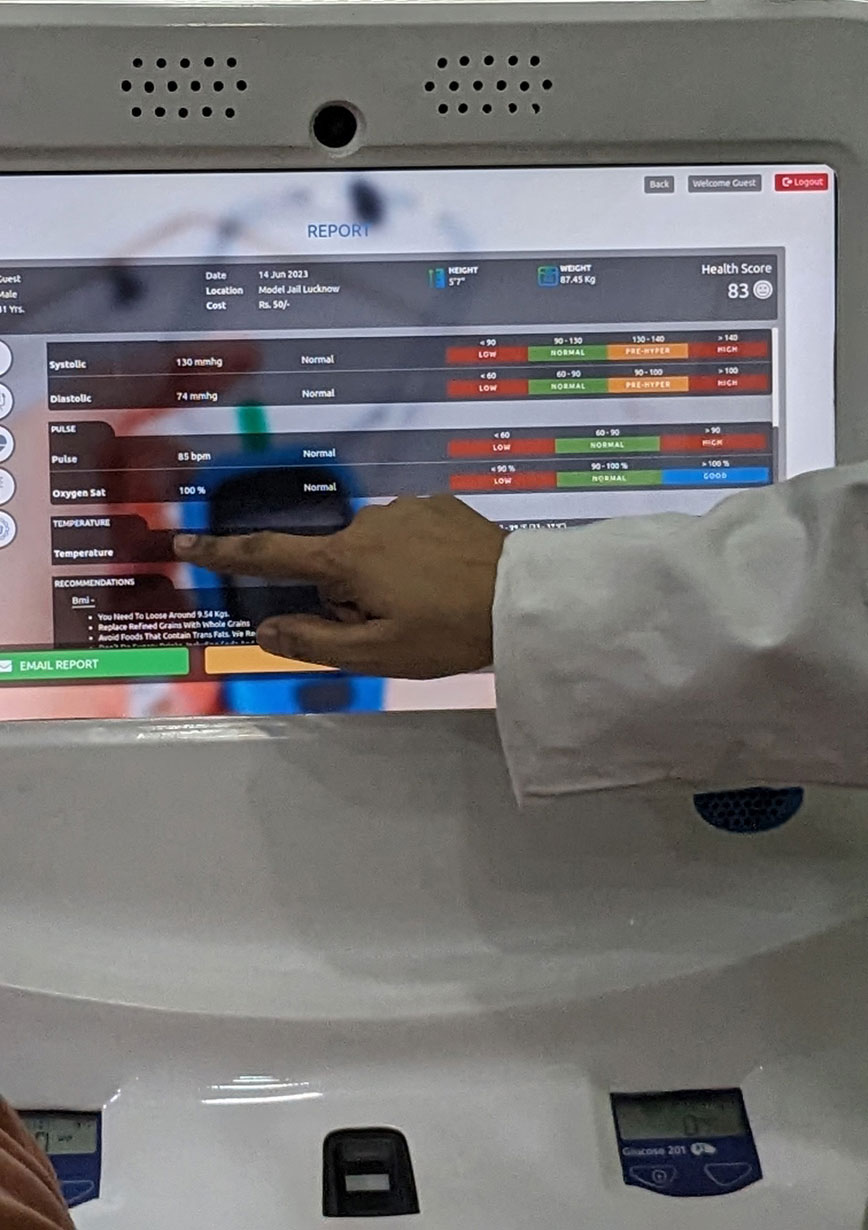YoloHealth ATMs change the healthcare delivery model
Health ATMs: The Next Frontier In Healthcare Delivery And Preventive Care
- The increasing prevalence of NCDs’ has shifted focus from diagnostics to screening
- Skewed doctor to patient ration results in delay in access to healthcare and compromises on quality
- Health ATM’s could be an answer to reducing burden on physicians and health centers
In December 2016, Essar Foundation established the first Health ATM at the Primary Health Centre in Palnar to provide quality care to villages of Kuakonda block in the remote Dantewada district. In October 2017, Max Bupa Health Insurance became the first insurer in India to launch Health ATMs and conduct non-intrusive medical tests and issue health policies for up to INR 1 Mn without manual intervention. In January of this year, The New Delhi Municipal Council (NDMC) launched a pilot project to install Health ATMs at various government hospitals.
Health ATMs come in different avatars and with a different set of core functionalities. At a basic level, Health ATMs can be defined as private, walk-in medical kiosks with integrated medical devices for basic vitals, cardiology, neurology, pulmonary testing, gynaecology, basic laboratory testing and emergency facilities and staffed by a medical attendant.
Health ATMs provides quick and convenient preventive health screening. They can also connect patients with certified doctors using high-definition video conferencing, digital medical devices and web/mobile applications. In urban locations, these ATMs serves as wellness kiosks as well.
With the increasing prevalence of non-communicable diseases, the mandate is no longer about diagnostics, but, about preventive screenings and early identification of diseases. This is precisely where this technology play such a pivotal role.
By providing seamless access to quality caregivers and affordable and quick diagnostics, Health ATMs empower consumers to be more cognizant about their health and provides them with a better alternative than retail care clinics and diagnostic laboratories.
Not just for preventive health, but, Health ATMs when used at primary care clinics, rural health centers and government hospitals, can also go a long way in cutting down on patient wait times and more crucially addressing the skewed doctor-patient ratio. By getting diagnostics done through the ATM, results can be transmitted and verified at a centralized control unit.
The unit can then instruct the physician on the ground about the diagnosis and treatment protocols. The ATM’s will do the same work as an ATM machine do for a BANK in reducing the load of physicians and hospitals and moving the needle towards early detection and prevention.
Challenges In Operating Health ATMs
It is not that operating a Health ATM is without its fair share of challenges. At a rural setting, availability of uninterrupted supply of electricity and internet connectivity along with adequate infrastructure could prove to be quite onerous. Same time, motivating the caregivers at primary centers or government hospitals to take on the additional responsibility of managing such ATMs could be quite difficult.
To add to this, a Health ATM would need constant maintenance efforts and refilling of consumables etc. In there is a lack of or delay in maintenance services, such Kiosk in no time would be relegated to cold storage.
Nevertheless, there are several groups working on and improving on current Health ATM models and capabilities. Same time, there are various preventive care and wellness ventures who are utilizing the convenience of such ATMs to adopt villages and address health issues or event use it in more modern settings such as malls and airports to provide consumers more convenient and quick access to diagnostic reports and access to quality caregivers.
With the increasing proliferation of the internet, stress on preventive care and greater consumerization of care, Health ATM’s have a great role to play in the next decade. Increasing capabilities and sophistication of such ATM’s indicate that the day is not far when such machines would be in a position to replace a retail care clinic completely and be the first touchpoint for any consumer seeking health information or looking to get access to a caregiver.

